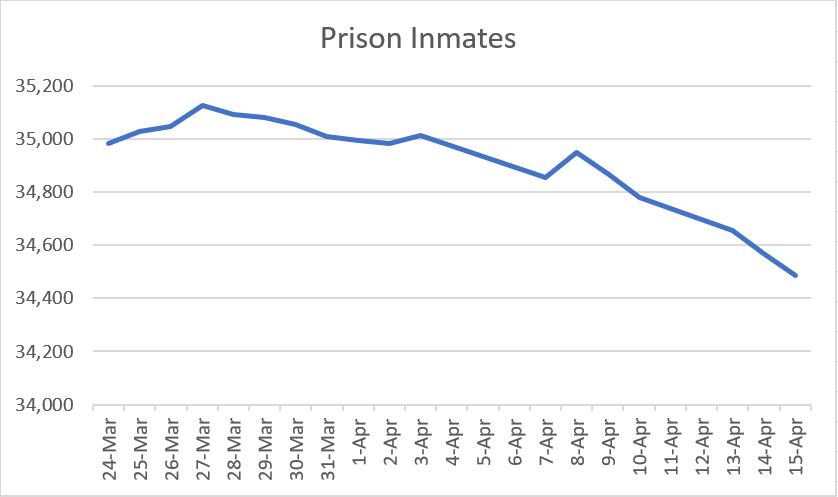As Shea discussed on Monday, the court system will look to expand operations on June 1. Today’s post describes a few of the issues related to probation that are likely to arise in the months ahead.
 Jamie Markham
Jamie Markham
2019 Cumulative Supplement to North Carolina Crimes Available
We’re pleased to announce that the 2019 Cumulative Supplement to North Carolina Crimes: A Guidebook on the Elements of Crime is now available for purchase. The book includes cases and legislation through December 31, 2019.
New Sentencing App Available
Six years ago (almost to the day) the School released its first version of the Structured Sentencing smartphone app. A new web-based version is available today.
Case Summaries – Supreme Court of the United States (April 20, 2020) and N.C. Court of Appeals (April 21, 2020)
This post summarizes an opinion issued by the Supreme Court of the United States on April 20, 2020, and opinions issued by the Court of Appeals of North Carolina on April 21, 2020.
2020 Sentencing Commission Statistical Report Available
Correctional statistics have been in the news as we consider the impact of the coronavirus on our jails, prisons, and supervised populations. This week the Secretary of Public Safety announced a decision to extend the limits of confinement for certain categories of inmates under G.S. 148-4 (the general plan is outlined here). That (in conjunction with the existing moratorium on new entries) caused the prison population to fall throughout the week. Advocates continue to push for broader releases.
But today’s post isn’t about what’s happening now to get certain inmates out of prison. Instead, it’s a review of the last year’s worth of data on how those inmates got there in the first place. The North Carolina Sentencing and Policy Advisory Commission recently published its annual Structured Sentencing Statistical Report for Felonies and Misdemeanors. Here are the highlights.
Two-Week Moratorium on Inmate Transfers to Prison
Effective today, the North Carolina Department of Public Safety has placed a 14-day moratorium on the movement of inmates from the county jails to the state prison system. State officials made the decision with the support of the North Carolina Sheriffs’ Association to help manage the COVID-19 pandemic.
Sentencing Health Control Measures
Whenever I teach about Structured Sentencing, I usually start by saying that the law covers most North Carolina crimes, with a few exceptions. Capital felonies and violent habitual felons have their own sentencing rules. And of course so does impaired driving. But a final exception carved out of Structured Sentencing in G.S. 15A-1340.10 is G.S. 130A-25, failure to comply with health control measures. I don’t typically spend much time on those rules, though, as there are only a handful of convictions under them in the state each year (seven in 2019). Now seemed like a good time to take a look.
FAQs about Coronavirus and the Correctional System
Today’s post shares my answers to some of the questions I have been asked related to the impact of the coronavirus pandemic on the correctional system. As you might imagine, many of those questions are focused on ways to reduce jail and prison populations.
The Correctional System Responds to COVID-19 (and Some Preliminary Thoughts on Minimizing Correctional Interactions)
Shea’s earlier post discussed the court system’s response to COVID-19. This post shares some related information from the state correctional system.
Intermediate Probation Conditions
I have been asked a few times lately which conditions of probation are “intermediate” conditions of probation. It turns out to be a little bit complicated.
